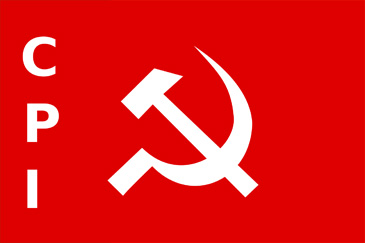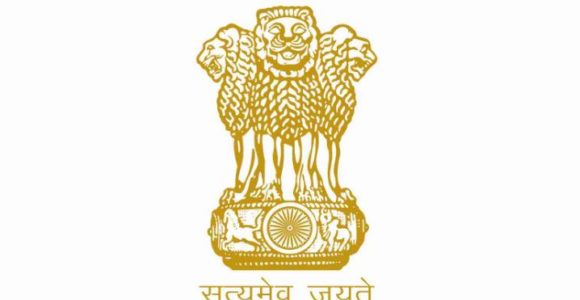
Communist Party of India (Marxist) (CPI(M))
Overview of Communist Party of India
The Communist Party of India (Marxist), popularly referred to as the CPIM or the CPM, is a major recognized national political party in India. It is a left-wing political party with a Communist political ideology. It is deeply influenced by the writings of Marx and Lenin, and propagates the ideas of social justice, social equality and a stateless and classless society. It claims to be a political party of the working classes of India, fighting for the issues of workers, peasants, farmers, agriculturists and others. Through such struggle, the CPIM aims to achieve a society ruled by the ‘dictatorship of the proletariat’.
CPIM was formed in 1964, when a faction of the members of the Communist Party of India (CPI) broke away from it. The CPIM split from the CPI, which was believed to have increasingly become sectarian and revisionist in approach. Many of the comrades within the CPI, with a hard-core leftist leaning, were of the opinion that the CPI was wrongly supporting the issues and policies of the Indian National Congress. The 7th Congress of the members of the Communist Party of India took place in Calcutta, in October-November 1964, to draft the constitution for the working of a new party. This came to be called the historic Calcutta Congress wherein the CPIM was formed. Though referred to by various names initially, the newly formed party adopted its formal name during the Kerala Legislative Assembly elections in 1965.
The mass base of the party is drawn from primarily three states namely, West Bengal, Kerala and Tripura. The CPIM leads the Left Front alliance, a major opposition to the ruling party at the Centre. The party is guided by a pyramidal hierarchical structure, with the Polit Bureau at the head, taking all major decisions and policies. The party operates on the principles of ‘Democratic Centralism’. Not everyone can become a party member of the CPIM. Potential comrades are initiated into the teachings of Marx and Lenin, through regular classes held by the party, before they can become ground-level members. The lowest rank in the order of party membership is the Branch Committees. The first General Secretary of the CPIM was P. Sundarayya, followed by one of the most apt leaders of India, E.M.S. Namboodiripad. The present General Secretary is Prakash Karat, who is in office from 2005 onwards. Basudev Acharia is the Leader in the Lok Sabha, representing the CPIM. Sitaram Yechury is the Leader in Rajya Sabha.
Election Symbol and its Significance
The Election Symbol of the CPIM, as approved by the Election Commission of India has an hammer and a sickle, intersecting each other. This is usually depicted on a red-coloured flag, which is the colour of struggle symbolizing any communist party. This symbol is very similar to the symbol used by the CPI, largely because their ideologies are not very distinctly different from one another. The intersecting hammer and sickle symbol is very significant. It depicts that the CPIM is a party of the peasants, of farmers, or labourers, who work in the fields and earn a living. It depicts the conditions of the working class. The sickle and hammer are used to cut corn and all other crops in the field.
They are essentially agricultural tools and weapons. The farmer toils in the field, and at the end of the day, gets a meager amount as pay. In other words, the farmer is exploited by the bourgeois sections of the society. This struggle is represented by the CPIM. It is a party of the poor, of the oppressed in society. The CPIM, through its Marxian ideologies and practices, in support with the trade unions present across the country, addresses the issues of the workers. It is symbolic of the anti-capitalist and anti-globalization policies and schemes across India. The symbol is therefore very prominent in the role the CPIM plays as a major left political party.
National Executives of the CPIM
The leaders of the CPIM, who are also their national representatives and executives, are the following:
- Prakash Karat, present General Secretary of CPIM – Karat became a member of the Politburo in 1992. He was one of the founders of the Student Federation of India (SFI), the most prominent student wing of the CPIM.
- Sitaram Yechury, Leader in Rajya Sabha, representing CPIM – Yechury is the Parliamentary Leader representing CPIM. Yechury was elected as a Member of Parliament, Rajya Sabha from West Bengal in 2005. He became a Politburo member in 1992.
- Basudev Acharia, Leader in 15thLok Sabha, representing CPIM – Though originally from Tamil Nadu, Acharia calls himself a Bengali in various ways. He was an All India Vice President of the CITU, a workers’ union of the CPIM. He also remained an important member in the Ministry of Industry, West Bengal. He identifies himself with a number of labour unions in the country.
- Manik Sarkar, Chief Minister of Tripura – Sarkar became a Politburo member at a very early age. He remains one of the most successful and honest Chief Ministers of the country.
Achievements
As a national political party, the CPIM has made a number of significant contributions to the political scenario of the country. Some of these are listed below:
- The CPIM made its strong presence felt in the states of West Bengal and Tripura where it is part of the Left Front and in Kerala as part of the Left Democratic Front. Each of these alliances is of the communist parties across India. The CPIM ruled West Bengal for a continuous period of 34 years, till 2011. In the State Assembly Elections of 2011, the All India Trinamool Congress took over power from the CPIM. CPIM is in power in Tripura, headed by Manik Sarkar as the Chief Minister. In Kerala, there is an interesting trend of the CPIM coming to power in alternative elections.
- The CPIM has a number of principal mass organizations like its labour wing called Centre of Indian Trade Unions (CITU), its peasant wing called the All India Kisan Sabha (AIKS), its student wings called Students Federation of India (SFI) and its youth organization called Democratic Youth Federation of India (DYFI). Each of these wings has contributed significantly to the cause of the poor and working class sections of the society. SFI is one of the foremost voices in left politics in various colleges and universities across India.
- CPIM has made a prominent contribution to the cause of women in the country through its very active organization All India Democratic Women’s Association (AIDWA). The AIDWA holds political rallies and organizes street-plays to make aware the women of the society.
- The CPIM as part of the Left Front, has raised its voice against a number of agendas of the Congress-led UPA government. Although initially in collaboration with the UPA, the CPIM withdrew support when the Congress went ahead with the United States- India Peaceful Atomic Energy Cooperation Act. According to the CPIM, this and many other steps of the present UPA government, such as disinvestment of profit making PSUs, introducing FDIs in finance sector and MNCs in retail sector are anti-people policies which they cannot support.
Contact Details
Official Website of CPIM-http://www.cpim.org/
Address of CPIM-Central Committee,A.K. Gopalan Bhawan,
27-29, Bhai Vir Singh Marg, New Delhi 110 001
Contact Numbers-PHONE:(91-11) 23344918, 23363692, 23747435/36
FAX :(91-11) 23747483
Email id:[email protected]





